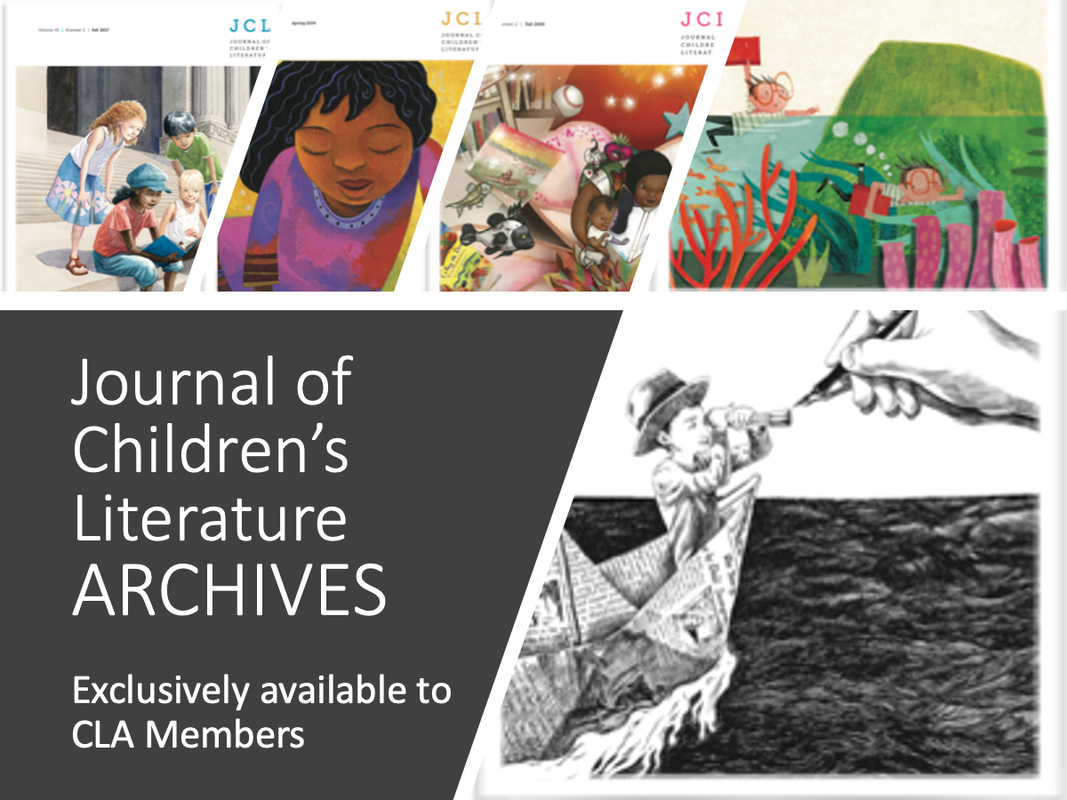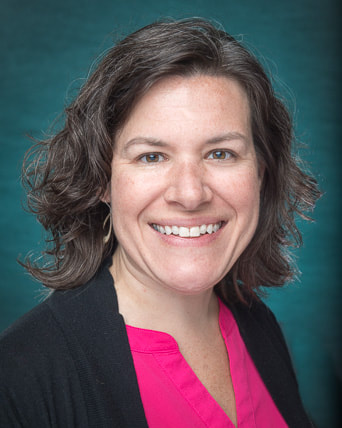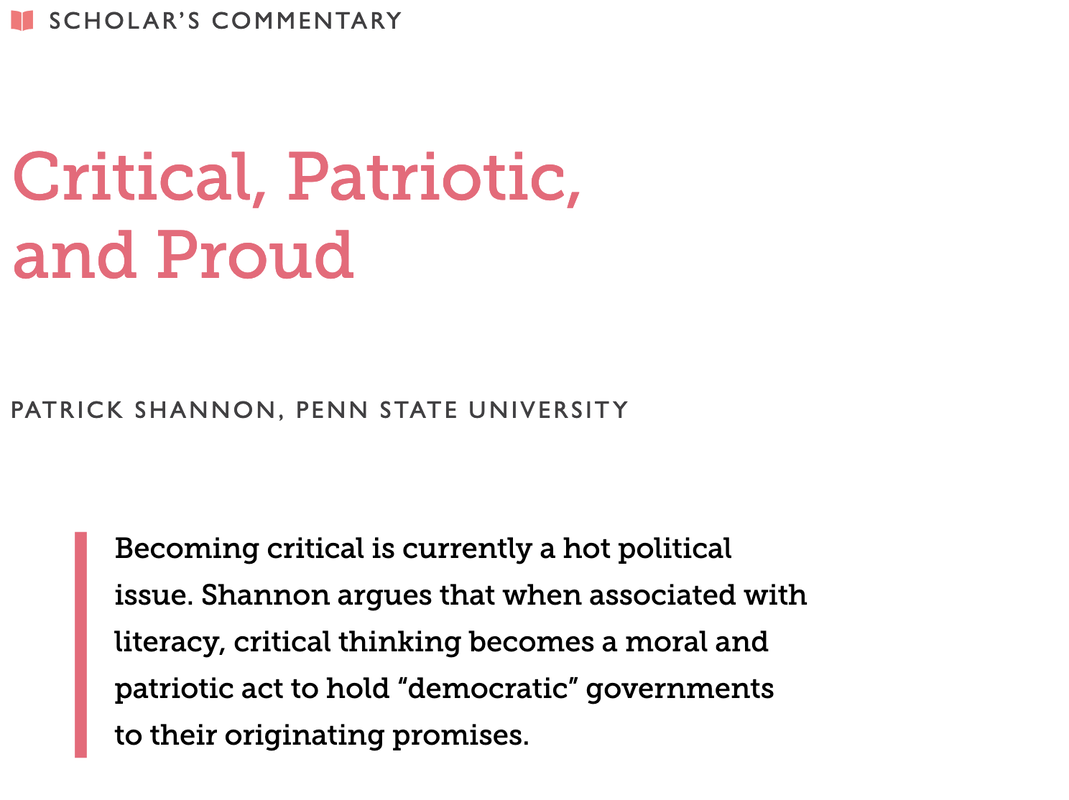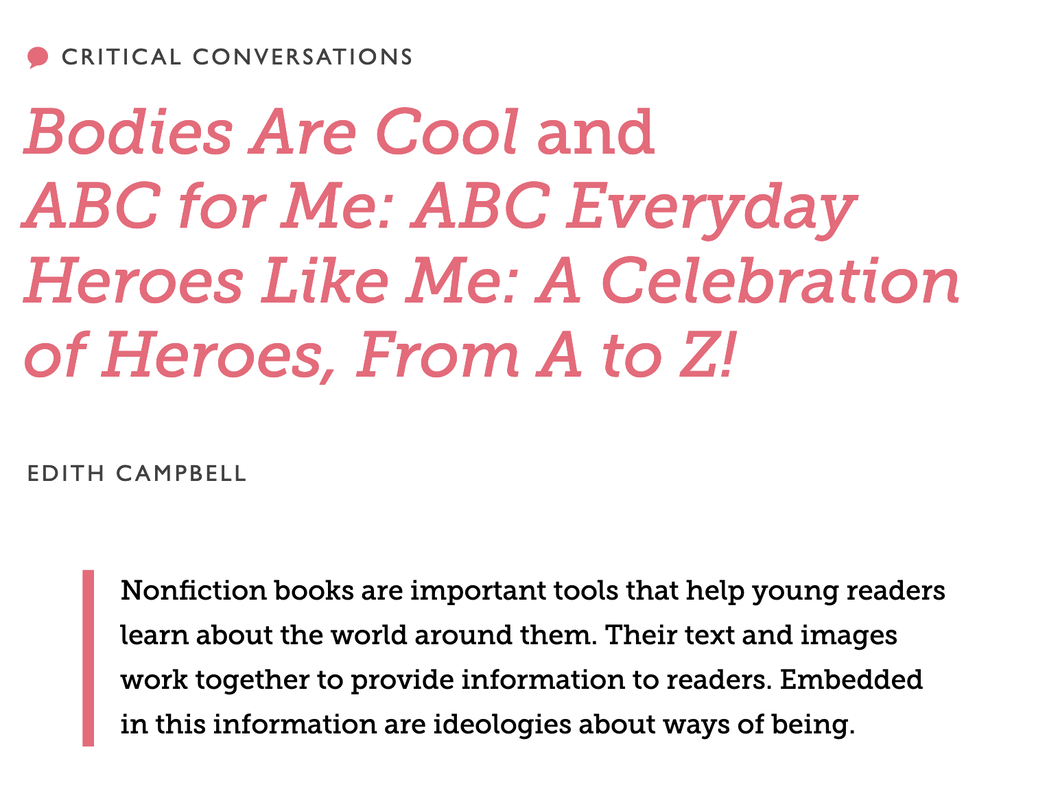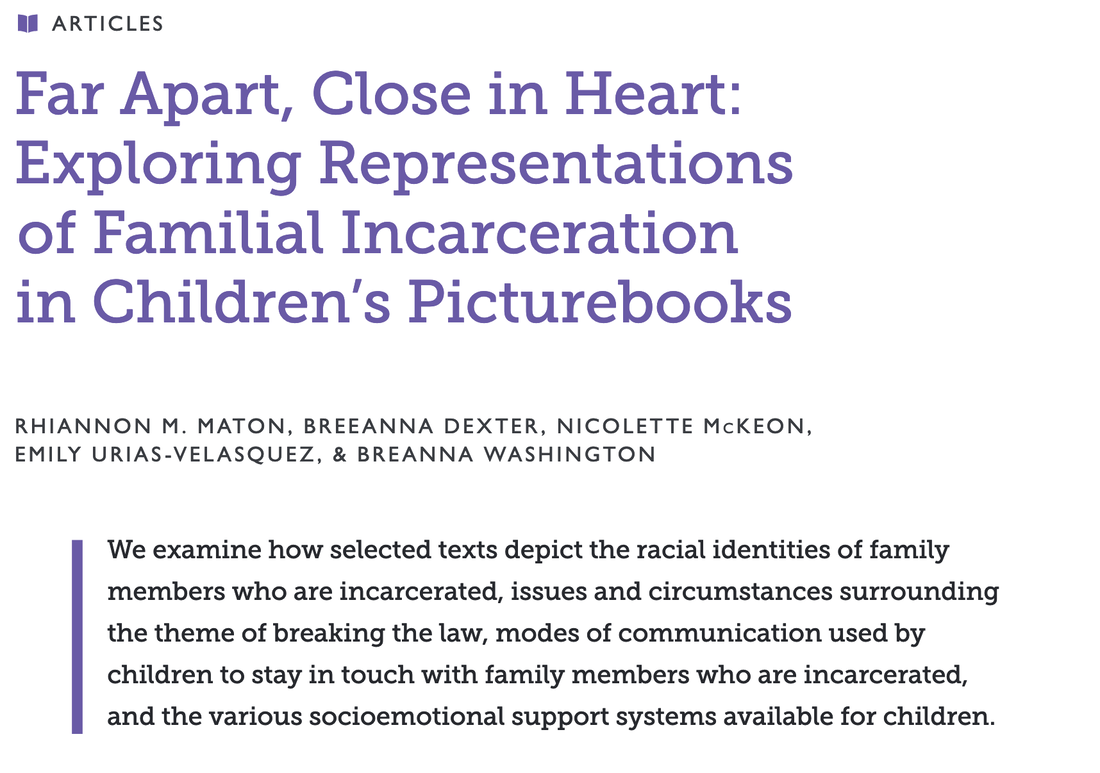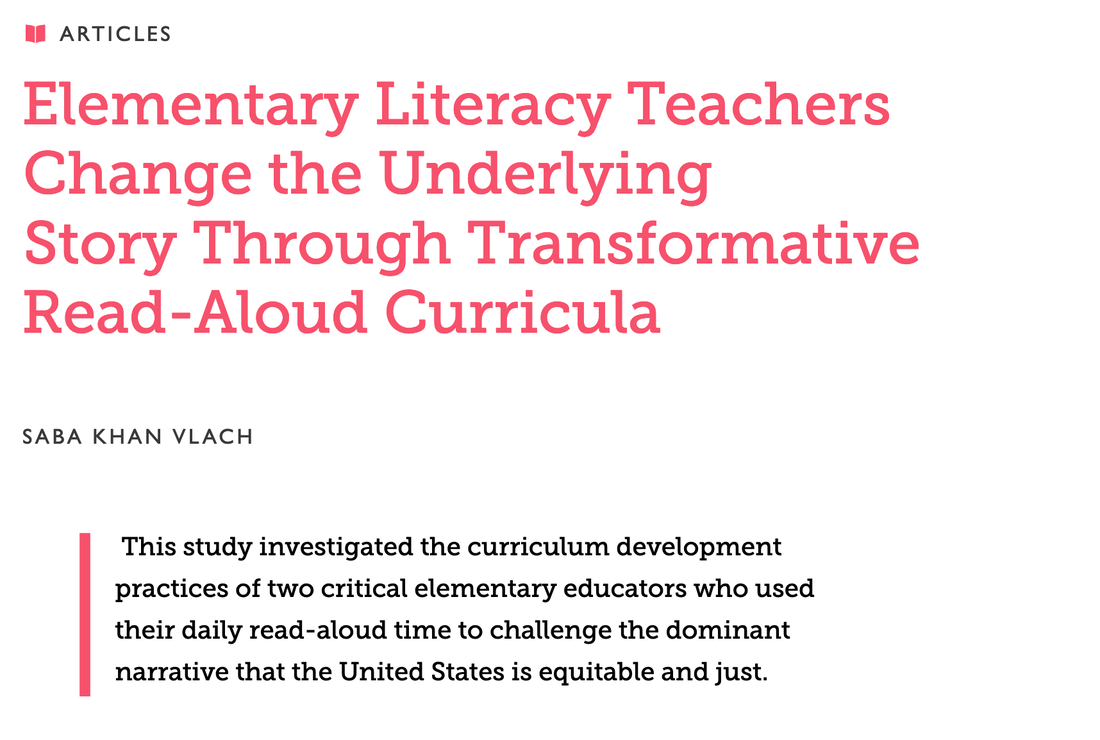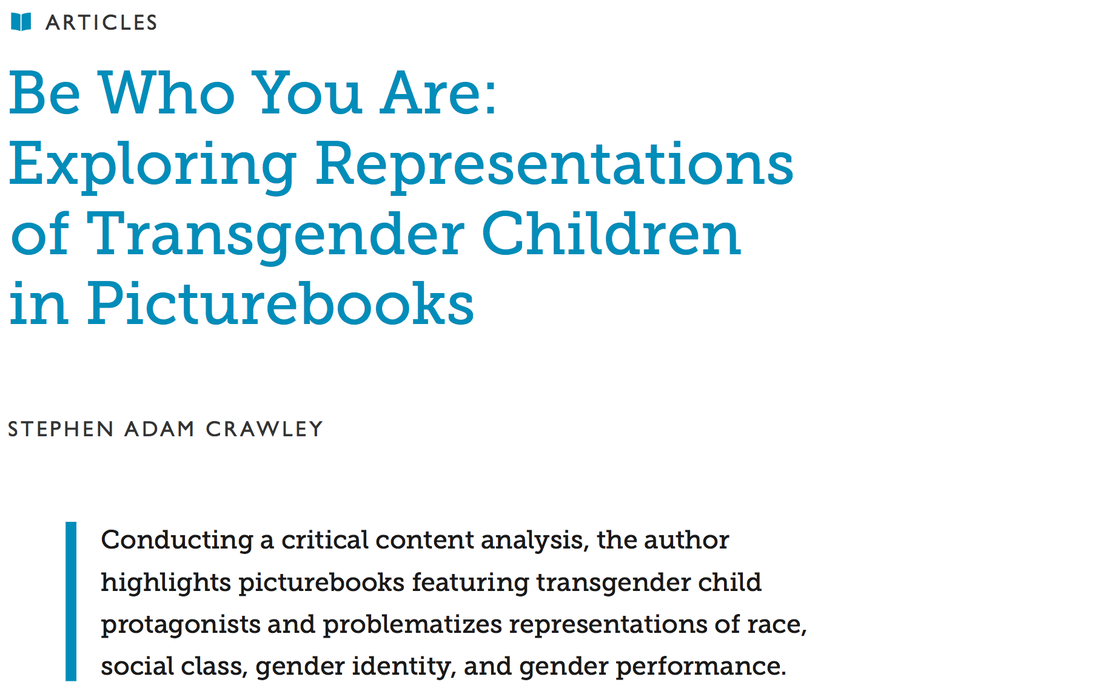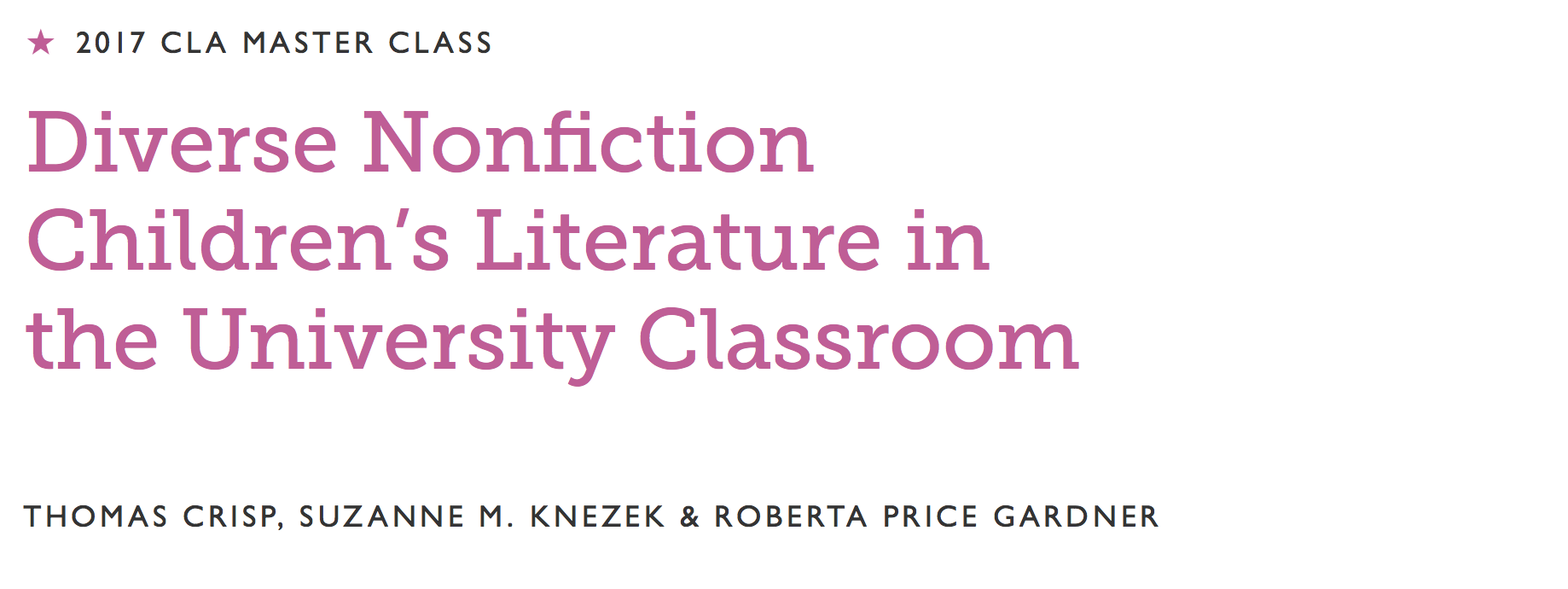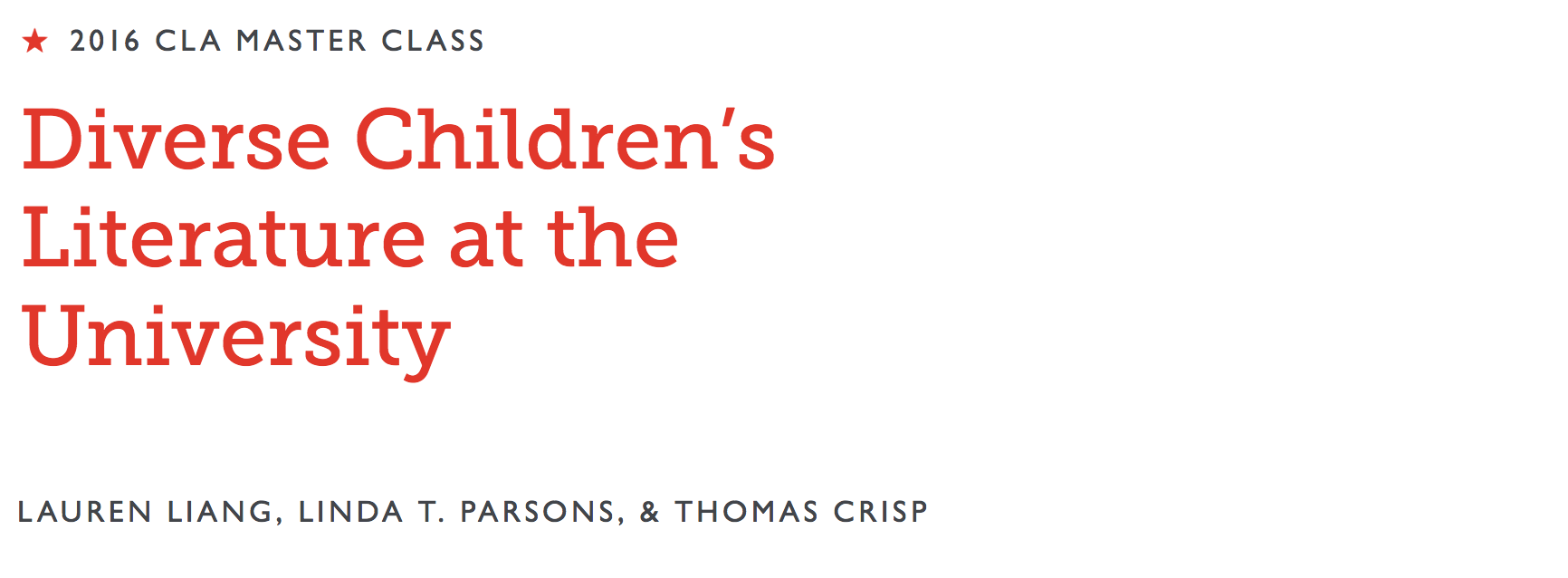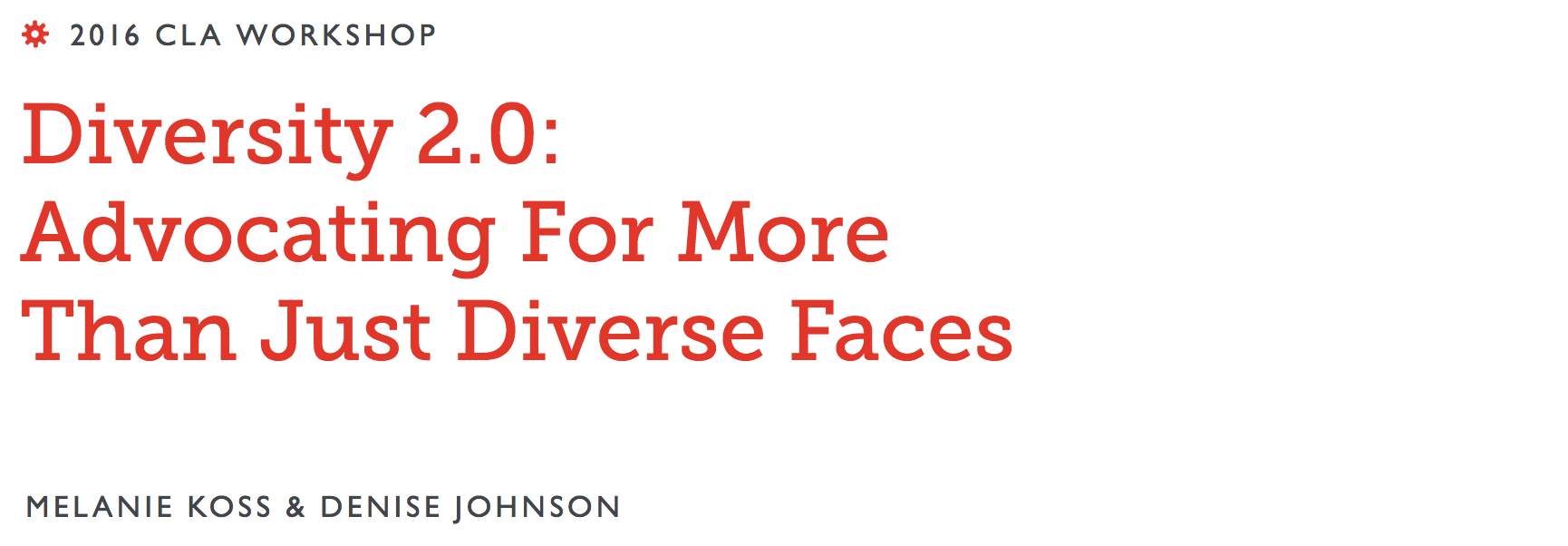CLA MEMBER-EXCLUSIVE FEATURES
|
ABOUT THE JOURNAL
The Journal of Children's Literature is a refereed journal devoted to teaching and scholarship for the field of children's literature. It is the product of the Children's Literature Assembly of NCTE and is published twice annually.
To join CLA and subscribe to the Journal of Children's Literature, visit our Membership Page or click on the membership links below. |
Journal MissionThe Journal of Children’s Literature, a refereed publication of the Children’s Literature Assembly of the National Council of Teachers of English, explores issues of current concern to scholars in the field of children’s literature, librarians, and classroom teachers—preschool through middle school. As a peer-reviewed professional publication, the Journal of Children’s Literature features research-based and scholarly articles that explore contemporary issues that are of interest to elementary and middle grade teachers, scholars and researchers of children’s literature, teacher educators, and librarians. It also recognizes the diversity of methodologies and theories and seeks critical perspectives on issues related to race/ethnicity, class, gender, sexuality, dis/ability, language and other similar topics in children’s literature
We value the unique position JCL occupies in the field, bridging theory and practice by publishing research-based and theoretical manuscripts that have immediate implications for the ways in which children’s literature is shared in elementary and middle grade classrooms, and discussed in communities outside the classroom. With the November 2015 approval of NCTE’s “Resolution on the Need for Diverse Children’s and Young Adult Books, JCL is committed to the recognition of diverse voices, the support of emerging IBPOC scholars and researchers, and to excellence in interdisciplinary research and scholarship in the field of children’s literature. We therefore welcome submissions that center literature studies in relation to issues of social justice, and equity, the representations of populations that have been historically marginalized or under-represented in children’s texts and culture, as well as the intersections between popular culture and identity. JCL Editors
First Issue (Spring 2023)
We are living in a time when children’s literature is making headlines more than perhaps ever before. To meet this moment, supporters of readers and reading need to be organized, educated, and vocal. That means the field of children’s iterature needs clear, accessible, high quality, published research. Journals that publish such research have the potential to supply accurate, meaningful knowledge and data related to literature for young people for the public, while also illustrating the broader possible questions, perspectives, and conclusions scholars of this literature might come to through their studies, regardless of media headlines. In other words, we envision a theory-into-practice focus where research into and analysis of literature is valued, especially where it’s presented in or alongside connections to reading, readers, and teaching practice to support practitioners. |
Join or Renew today!
Join/Renew Online CALL FOR EDITORS CLA invites applications for the position of Editor(s) of JCL.
TERM 2025: Onboarding 2026-28: Active Term Deadline: August 31, 2024 CONTACT JCL'S EDITORS JOURNAL METRICS Acceptance Rate: 8-10% Indexed in EBSCO, ERIC ADVERTISING INQUIRIESAdvertising inquiries may be addressed to: JCL Editors at [email protected]
Full cover $250 Full page $195 1/2 page. $135 Island 1/2 page $135 SPECIAL CONTENT
Vertical Divider
|
MANUSCRIPT GUIDELINES
Manuscripts should not exceed 25 double-spaced, typed pages (inclusive of references and tables, but exclusive of any images). Use APA (7th edition) format. Please submit a single document which includes tables, graphs, and images at the end of the document. A separate cover page should include the author’s name, mailing address, telephone number, email address, and school/professional affiliation and an abstract of approximately 50-150 words. The author’s name or any reference that would enable a reviewer to know who the author is should not appear on the manuscript. If the manuscript contains samples of student work, photographs of students, charts, diagrams, or other visuals, include scans upon submission; originals will be requested upon acceptance. Permission must be secured for samples of student work, photographs of students, and any copyrighted work.
If the submission is to a themed issue, please indicate in the cover letter the themed issue for which the manuscript is being submitted. Manuscripts will not be sent out for peer review until all information is provided. We also ask that the author’s positionality be a part of the manuscript in some way so readers have a deeper understanding of the context in which the scholar is thinking and writing. Each submitted manuscript will be screened by the editorial team. Any manuscript that is selected for peer review will be reviewed by at least two members of the editorial board. Decisions will be made within 8–12 weeks of publication of the journal issue for which the submission was made. Only electronic submissions will be accepted.
Manuscripts submitted to the Journal of Children’s Literature should not be under review for publication elsewhere. In addition, manuscripts should not have been previously published in another journal.
Please submit manuscripts via email to [email protected].
If the submission is to a themed issue, please indicate in the cover letter the themed issue for which the manuscript is being submitted. Manuscripts will not be sent out for peer review until all information is provided. We also ask that the author’s positionality be a part of the manuscript in some way so readers have a deeper understanding of the context in which the scholar is thinking and writing. Each submitted manuscript will be screened by the editorial team. Any manuscript that is selected for peer review will be reviewed by at least two members of the editorial board. Decisions will be made within 8–12 weeks of publication of the journal issue for which the submission was made. Only electronic submissions will be accepted.
Manuscripts submitted to the Journal of Children’s Literature should not be under review for publication elsewhere. In addition, manuscripts should not have been previously published in another journal.
Please submit manuscripts via email to [email protected].
Calls for Manuscripts
Spring 2025 Themed Issue
Looking Back to Move Forward: The Next 50 Years of Children’s Literature
(Manuscripts due August 15, 2024)
Looking Back to Move Forward: The Next 50 Years of Children’s Literature
(Manuscripts due August 15, 2024)
“At the NCTE [1974] Convention in New Orleans, a plan was made to form a Children’s Literature Assembly (CLA). The plan was sent to NCTE, and the new Assembly has been recognized and granted NCTE Affiliate Status.”1
Almost fifty years ago, the National Council of Teachers of English ratified the creation of the Children’s Literature Assembly. During the following spring, George Gleason edited a newsletter playfully nicknamed “Ripples” for a concrete poem adorning the left margin of the first page. The newsletter, mimeographed and stapled, was sent out to “teachers of courses in children’s literature; children’s librarians; writers, editors, and publishers of children’s books; just anyone who is interested.” It shared news about members and previewed an upcoming NCTE Language Arts Conference and the 1975 NCTE Annual Convention. As the first CLA publication, this inaugural issue of “Ripples” served as the precursor to the Journal of Children’s Literature.
As an editorial team, we engaged in many lively conversations about how JCL might commemorate this point in our organization’s history without losing focus on current work, particularly related to diversity and social justice that we see as essential to the future “ripples” in children’s literature research. As such, for this issue we encourage you to look back at where we’ve been in order to move our profession forward. Our call for this issue asks scholars to investigate the ripples of our field’s past as they also conceptualize and strive to discover currents we have yet to explore, centering voices of participants from empirical work whenever possible.
Some possible paths of inquiry include:
Manuscript Guidelines
For this issue, submissions may take different forms than the traditional reports of research. We are open to shorter pieces, essays/arguments, and historical analyses that may be presented in different formats. No manuscript should not exceed 25 double-spaced, typed pages (inclusive of references and tables, but exclusive of any images). Use APA (7th edition) format. Please submit a single document which includes tables, graphs, and images at the end of the document. A separate cover page should include the author(s) name(s), mailing address(es), telephone number(s), email address(es), position(s)/title(s), and school/professional affiliation(s) and an abstract of approximately 50-150 words. The author’s name or any reference that would enable a reviewer to know who the author is should not appear in the manuscript. If the manuscript contains samples of student work, photographs of students, charts, diagrams, book covers, or other visuals, include scans in a separate file upon submission; originals will be requested upon acceptance. Permission must be secured for samples of student work, photographs of students, and any copyrighted work.
If the submission is to a themed issue, please indicate in the cover letter the themed issue for which the manuscript is being submitted. Manuscripts will not be sent out for peer review until all information is provided. We also ask that the author’s positionality be a part of the manuscript in some way so readers have a deeper understanding of the context in which the scholar is thinking and writing. Each submitted manuscript will be screened by the editorial team. Any manuscript that is selected for peer review will be reviewed by at least two members of the editorial board. Decisions will be made within 8–12 weeks of publication of the journal issue for which the submission was made. We will forgo the traditional “Ripples” request for printed copies to be “sent, along with a return-addressed, stamped manila folder.” Please submit manuscripts via email to [email protected]. Only electronic submissions will be accepted.
Manuscripts submitted to the Journal of Children’s Literature should not be under review for publication elsewhere. In addition, manuscripts should not have been previously published in another journal.
1 Gleason, G. (1975, March). Reprise. CLA Newsletter, 1(1), 1-4.
As an editorial team, we engaged in many lively conversations about how JCL might commemorate this point in our organization’s history without losing focus on current work, particularly related to diversity and social justice that we see as essential to the future “ripples” in children’s literature research. As such, for this issue we encourage you to look back at where we’ve been in order to move our profession forward. Our call for this issue asks scholars to investigate the ripples of our field’s past as they also conceptualize and strive to discover currents we have yet to explore, centering voices of participants from empirical work whenever possible.
Some possible paths of inquiry include:
- Critical analyses of changes in reading and the teaching of reading with children’s
literature - Historical analyses of contexts and frames for better understanding current classroom
literacy practices with books - Essays on events – the historical inflection points – that have pushed the arc of
children’s literature as a field - Historical comparisons of the literature and resources available for use in classrooms
between (however you define) “Then” and “Now” - Reports on how you have engaged students in the historical analysis of literature
through a critical lens - Critical discussions or dialogues that look at canonical literature through contemporary
lenses and classroom practices- “Read this, not that”
- Arguments for or against the use of canonical texts
- Shifts in language and labeling (i.e., sci fi/fantasy vs. speculative fiction)
- Comparative critical content analyses
- “Read this, not that”
- Reflections on how movements and organizations dedicated to diversity, equity, and inclusion – We Need Diverse Books, Comic Book Legal Defense Fund, #OwnVoices, etc. – have changed the field and affected your teaching and your students' learning
- Discussions of how access (or limitations of access) to diverse texts, including format/genre as well as representations, changed your teaching and reading
- Investigations on what hasn’t (yet?) changed in the field; what are the lasting tensions, cyclical/repeating patterns, or resurgence of problematic texts and practices that affect your teaching and learning?
- Meta-analyses or meta-syntheses of the themes and methodologies taken up in past issues of JCL, especially those that offer possible gaps in the field that newer scholars might take up
Manuscript Guidelines
For this issue, submissions may take different forms than the traditional reports of research. We are open to shorter pieces, essays/arguments, and historical analyses that may be presented in different formats. No manuscript should not exceed 25 double-spaced, typed pages (inclusive of references and tables, but exclusive of any images). Use APA (7th edition) format. Please submit a single document which includes tables, graphs, and images at the end of the document. A separate cover page should include the author(s) name(s), mailing address(es), telephone number(s), email address(es), position(s)/title(s), and school/professional affiliation(s) and an abstract of approximately 50-150 words. The author’s name or any reference that would enable a reviewer to know who the author is should not appear in the manuscript. If the manuscript contains samples of student work, photographs of students, charts, diagrams, book covers, or other visuals, include scans in a separate file upon submission; originals will be requested upon acceptance. Permission must be secured for samples of student work, photographs of students, and any copyrighted work.
If the submission is to a themed issue, please indicate in the cover letter the themed issue for which the manuscript is being submitted. Manuscripts will not be sent out for peer review until all information is provided. We also ask that the author’s positionality be a part of the manuscript in some way so readers have a deeper understanding of the context in which the scholar is thinking and writing. Each submitted manuscript will be screened by the editorial team. Any manuscript that is selected for peer review will be reviewed by at least two members of the editorial board. Decisions will be made within 8–12 weeks of publication of the journal issue for which the submission was made. We will forgo the traditional “Ripples” request for printed copies to be “sent, along with a return-addressed, stamped manila folder.” Please submit manuscripts via email to [email protected]. Only electronic submissions will be accepted.
Manuscripts submitted to the Journal of Children’s Literature should not be under review for publication elsewhere. In addition, manuscripts should not have been previously published in another journal.
1 Gleason, G. (1975, March). Reprise. CLA Newsletter, 1(1), 1-4.
Contribute to Columns
Teaching and reading books that policy makers resist
We know that many teachers work in states, cities, or districts where books are being actively challenged, especially books related to historically marginalized identities. And yet, teachers engage in conversations and use banned and challenged books anyway.
We are dedicating a featured column in the fall issue of the Journal of Children's Literature to highlighting the work of these audacious teachers. We are asking members of the Children's Literature Assembly and the educators they know to share how they work with actively challenged books to ensure that their students are seen. We are interested in what policies attempt to limit your use of literature and how you teach around or through it. [Note: We can keep your name and school/district anonymous.]
If you are interested in sharing your work with us, please fill out the submission form.
Thank you!
The JCL Editorial Team
We are dedicating a featured column in the fall issue of the Journal of Children's Literature to highlighting the work of these audacious teachers. We are asking members of the Children's Literature Assembly and the educators they know to share how they work with actively challenged books to ensure that their students are seen. We are interested in what policies attempt to limit your use of literature and how you teach around or through it. [Note: We can keep your name and school/district anonymous.]
If you are interested in sharing your work with us, please fill out the submission form.
Thank you!
The JCL Editorial Team
SAMPLE ARTICLES Far Apart, Close in Heart: Exploring Representations of Familial Incarceration in Children’s Picturebooks
By RHIANNON M. MATON, BREEANNA DEXTER, NICOLETTE McKEON, EMILY URIAS-VELASQUEZ, & BREANNA WASHINGTON |
JCL COLUMNS2017 cla master class: Diverse nonfiction
children's literature in the university classroom by T. Crisp, A. Knezek & R. gardner 2016 CLA Master class: Diverse children's
literature at the university by L. LianG, L. Parsons & T. Crisp |

